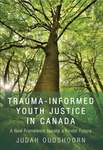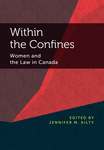We don’t actively support Internet Explorer
It appears that you are using Internet Explorer, which has been discontinued by Microsoft. Support has ended for versions older than 11, and as a result you may face security issues and other problems when using it.
We recommend upgrading to a newer browser such as Firefox, Google Chrome, or Edge for a much better experience across the web.
While this site may work with Explorer, we are not testing and verifying it, so you may run into some trouble or strange looking things.
Youth in Conflict with the Law, Fourth Edition
By Denise Whitehead, Mark Hunter
Overview
Dealing with young people who come into conflict with the law is one of the most important parts of being a police officer. Now in its fourth edition, Youth in Conflict with the Law provides up-to-date analysis on how police handle young persons, while focusing on new and updated legislation, such as the Canadian Victims Bill of Rights, the Safe Streets and Communities Act, and the Child, Youth and Family Services Act. The authors include new material on issues of race, the Black Lives Matter movement, mental health, ethnicity, and social media.
The book encourages students to consider the problem of youth crime within social contexts, and to recognize the facts that lead youth to enter into conflict with the law. This resource is ideal for college police foundations students across Canada.
Table of Contents
FOREWORD
PREFACE
CHAPTER 1: OFFENDING BY YOUNG PEOPLE IN HISTORICAL PERSPECTIVE
Introduction
Adults and the Law
Youth and the Law
Treatment of Youth in the Criminal Justice System
Youth Crime as a Social Problem
Responses to Youth Crime
Institutional Responses
Dissatisfaction with Institutions
The Juvenile Court
Changing Perceptions of Youth
Establishment of Youth-Focused Courts
The Use of Probation
CHAPTER 2: LEGISLATION DEALING WITH YOUNG CANADIANS IN CONFLICT WITH THE LAW: A BRIEF HISTORY
The Need for Context
Challenges of Criminal Law
The Role of Police
The Early Years
Legislative History
The Introduction of the Criminal Code of Canada
Responses to Youth Imprisonment
Legislative Responses
Ontario Children’s Protection Act
The Juvenile Delinquents Act
Canadian Division of Powers
Expansion of Criminal Offences
Reliance on Provincial Co-operation
Creation of Juvenile Probation
Criticism of Juvenile Delinquents Act
The Young Offenders Act
End of Status Offences
Key Provisions of the Young Offenders Act
Criticisms of the Young Offenders Act
CHAPTER 3: CURRENT LEGISLATION RELATING TO YOUNG PEOPLE
The Young Person and the Law
Constitutional Framework
Federal Powers
Provincial Powers
Delegation of Powers
Doctrine of Paramountcy
Incarceration
The Criminal Code of Canada
The Canadian Charter of Rights and Freedoms
The United Nations Convention on the Rights of the Child
The Child, Youth and Family Services Act
The Youth Criminal Justice Act and the 2012 Amendments
The 2012 Amendments: Safe Streets and Communities Act
Overview of the YCJA and Its Key Provisions
Provincial Legislation
CHAPTER 4: YOUTH CRIME: HOW BIG A PROBLEM?
Measuring Crime
Official Statistics
Self-report Surveys
Victimization Surveys
Other Procedures
Processing Counts of Crime
Statistics on Youth Offenders
Demographics
What Kinds of Crimes Do Young Offenders Commit?
Gender and Crime
What Impact Did the YCJA Have on Crime Rates?
CHAPTER 5: PROTECTING YOUNG PEOPLE: CHILD, YOUTH AND FAMILY SERVICES ACT
Introduction
What Is the Purpose of the Child, Youth and Family Services Act?
Definitions: To Whom Does This Act Apply?
First Nations, Inuit, and Métis Children
Functions of Children’s Aid Societies
Apprehensions: Role and Responsibilities of the CAS
Warrants and Apprehension
Peace/Police Officer Powers
Crown Wardship
Youth Justice
Detention Programs or Facilities
Rights of Children and Young Persons in Care
CHAPTER 6: ARRESTING AND QUESTIONING YOUNG PERSONS
Arresting Young Persons
Points to Consider
Who Is a “Young Person”?
Basic Rights of the Accused
Arrest
Questioning the Young Person
Requirement for Proper Procedures
How to Inform Young Persons of Their Rights
Explanations Appropriate to the Young Person’s Age and Understanding
Caution Examples
Notification to Parents
Notification of Appearance Notice or Summons
Persons Under 12 Years of Age
Duties of the Peace Officer
Other Types of Apprehensions
CHAPTER 7: EXTRAJUDICIAL MEASURES
Extrajudicial Measures
Appropriateness of Extrajudicial Measures
Police
Police Discretion
Notes about Extrajudicial Measures
Crown Prosecutors
Types of Extrajudicial Measures
Notes about Extrajudicial Measures
Youth Justice Court
What Happens to the Charge after Completion of the Extrajudicial Sanction?
Looking Ahead
Summary
CHAPTER 8: PRE-TRIAL DETENTION AND PROCESSING
Pre-trial Detention
Grounds for Pre-trial Detention
Local Policies and Procedures
How the CCC Applies to the Arrest and Detention of Young Persons
Appearance before a Judge: The Show-Cause Hearing
Conditions of Release
Temporary Restraint, Temporary Detention, Secondary Cautions, and Bail
Temporary Restraint
Temporary Detention
Secondary Caution to Charged Person
Bail Hearings and Release on Bail
Records
Fingerprinting and Photographing
Police Records
Government Records
Other Records
Period of Access
Protection of Privacy
Accessibility of Records
Summary: Putting It Together
CHAPTER 9: THE YOUTH JUSTICE COURT: THE TRIAL AND SENTENCING
Jurisdiction: Youth Justice Court
The Main Players
Pre-trial and Trial Matters before the Court
Stages and Phases in Court Proceedings
How Does Youth Court Compare to Adult Court?
Sentencing
Purpose and Principles of Sentencing
Information Gathering: Determining What Is Best for the Youth
Youth Sentencing Options
In-court Sanctions Community-based Sanctions Statistics on Sentencing
Custody and Supervision
CHAPTER 10: CUSTODY AND SUPERVISION
Custodial Provisions
Levels of Custody
Terms of Custody
Youth Correctional Statistics in Canada
Indigenous Youth
Length of Stay
Relationship Custody
Extraordinary Measures While in Custody
Review of Sentences
Re-integrative Leave
Conditional Supervision
Custodial Alternatives
Conclusion
CHAPTER 11: THE CRIMINAL JUSTICE SYSTEM: ITS OBJECTIVES AND THE PLACE OF RESTORATIVE JUSTICE
The Objectives of the Criminal Justice System
Restraint
Retribution
Specific Deterrence
General Deterrence
Symbolism
Rehabilitation
Restitution
Summary
Youth Criminal Justice System
Restraint
Retribution
Specific/Individual Deterrence
General Deterrence
Symbolism
Rehabilitation
Restitution
Focus on Reintegration and Restoration
Restorative Justice in Canada
Restorative Justice: An Indigenous Tradition
Restorative Justice and Youth in Conflict with the Law
CHAPTER 12: INTERACTION: YOUNG PEOPLE AND THE POLICE
Young People and the Police
Attitudes Toward the Police
Age
Social Class
Race and Ethnicity
Misunderstanding
Adversarial Contact
Enhancing the Image
Dealing with Young People
Special Circumstances
Child Endangerment
Children Who Are Out of Control
Young People with Mental Health Issues
Dealing with Gangs
Bullying and Cyberbullying: The Impact of Social Media
How Social Media Is Transforming Youth Crime
APPENDIX: YOUTH CRIMINAL JUSTICE ACT
GLOSSARY
REFERENCES
INDEX












